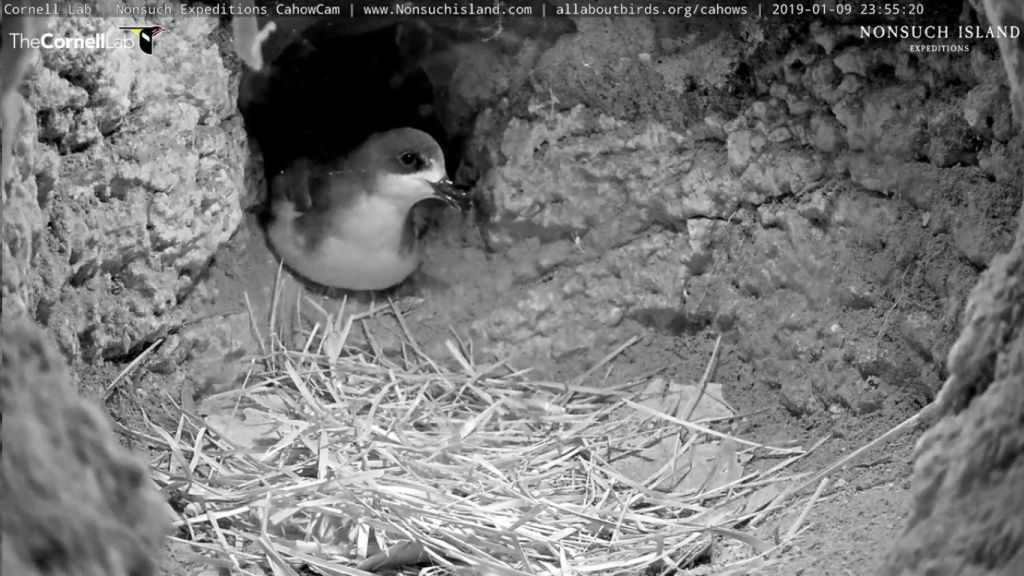
The nesting season began for this Bermuda cahow when she returned to her nest burrow on Wednesday 9 January 2019 at 11:55pm (almost midnight). By 1am she had laid her single egg. Click here for a video.
Our female Cahow returned right on schedule and promptly laid her single egg. This our 7th season broadcasting live from the nesting burrow of the second rarest seabird in the planet: the Bermuda Petrel on #nonsuchisland for the #nonsuchexpeditions in #b… https://t.co/2GfxPpmPb5 pic.twitter.com/EXD2SVikzr
— Nonsuch Expeditions (@Nonsuch_Bermuda) January 10, 2019
Cahows or Bermuda petrels (Pterodroma cahow) live on the open ocean and only come to land on dark nights during the nesting season, placing their nests in underground burrows on small inaccessible islands to protect them from predators. Humans used to be one of those predators. We ate them. By 1620 cahows were presumed extinct.
When cahows were rediscovered in 1951 there were only 18 nesting pairs on Earth, but thanks to the conservation efforts of David B. Wingate and the Cahow Recovery Project there are now more than 135. Most of them are on Nonsuch Island where many burrows are man-made to provide additional nesting sites. This burrow has a camera.
The pair that “owns” this burrow came back in November to refurbish the site, court and mate. In December they returned to the sea. Then on Wednesday the female returned to lay her egg and begin incubation. Her mate will arrive and take over incubation so she can go back to the ocean to eat.
Cahows are nocturnal so you’ll see them most active when it’s night in Bermuda. Watch their family life on the Bermuda Cahow Nestcam. Stay up to date on Twitter at @BermudaCahowCam.
(photo from the Bermuda Cahow Cam; click on the caption to see it “Live”)